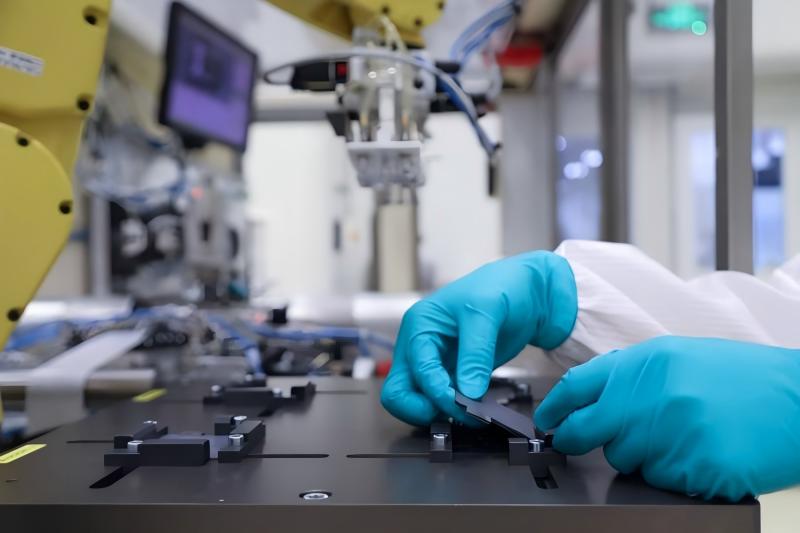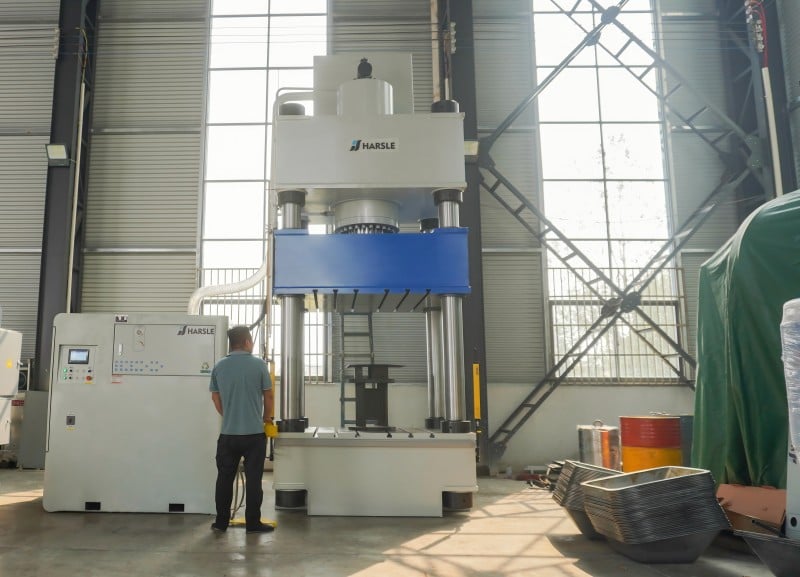Documentation Hub
Comprehensive technical manuals and guides to help you master HARSLE machines and optimize your metalworking efficiency
Why Use Hydraulic Press in Scientific Research Today?
- Applications of Hydraulic Press in Scientific Research
- How to Set Up a Hydraulic Press for Scientific Use
- Advantages of Using Hydraulic Press in Scientific Research
- FAQs
- Why should I use a hydraulic press instead of a manual press in research?
- Can hydraulic press in scientific research be used for both material and biological testing?
- How often should I calibrate my hydraulic press for research purposes?
- What safety measures are important when using a hydraulic press in the lab?
- Conclusion
When it comes to laboratory and industrial testing, precision and reliability are critical. Hydraulic press in scientific research provides a powerful solution for experiments that require controlled pressure, compacting materials, or simulating industrial processes. If you are wondering how hydraulic presses can improve research efficiency and accuracy, you’re in the right place. In this article, I’ll explain their applications, how to set them up for research environments, the benefits they bring, and answer some common questions scientists often have. By the end, you’ll have a clear understanding of why hydraulic presses are essential in modern research laboratories.
Applications of Hydraulic Press in Scientific Research

Material Testing with Hydraulic Press
One of the most common applications of hydraulic press in scientific research is material testing. Researchers use presses to evaluate the strength, hardness, and durability of different materials. By applying consistent force, they can simulate real-world conditions and measure how metals, polymers, or composites perform under stress. This is especially important in fields such as aerospace, automotive, and civil engineering.
Hydraulic Press for Sample Preparation
In chemical and biological research, preparing accurate samples is critical. Hydraulic presses are often used for pellet preparation in spectroscopy and X-ray fluorescence (XRF) testing. By compressing powders into solid pellets, researchers can achieve better accuracy in their analysis. This process reduces errors caused by inconsistent particle sizes and ensures that results are repeatable.
Simulating Industrial Conditions in the Lab

Many scientists use hydraulic presses to simulate industrial processes on a smaller scale. For example, compacting battery materials, pressing polymers, or testing new alloys under controlled pressure. These applications allow researchers to predict how materials or products will behave before scaling up production, saving both time and resources.
How to Set Up a Hydraulic Press for Scientific Use
Step 1: Preparing the Research Environment
Before setting up the hydraulic press, I make sure the lab area is safe, clean, and free from vibration sources. Stability is essential because even small disturbances can affect precision testing. I also confirm that the floor or workbench is level to ensure consistent pressure distribution.
Step 2: Installing and Adjusting the Tooling

The next step is to install the right die, mold, or compression plate for the experiment. For sample preparation, I use polished dies to avoid contamination. For material testing, I select tooling that can withstand repeated stress. Proper alignment ensures that the applied pressure is distributed evenly across the sample.
Step 3: Calibrating the Hydraulic System
Calibration is crucial for accurate scientific results. I check the hydraulic press’s gauge and sensors against a standard reference. Digital monitoring systems can also be used to measure the applied pressure precisely. This step prevents data errors and ensures repeatable outcomes across multiple tests.
Advantages of Using Hydraulic Press in Scientific Research

- High Precision: Controlled and measurable pressure ensures accurate experimental results.
- Versatility: Suitable for materials science, chemistry, biology, and industrial simulations.
- Efficiency: Reduces preparation time and speeds up repetitive testing.
- Reliability: Built for heavy use, hydraulic presses provide long-term stability for research labs.
- Scalability: Results from laboratory-scale experiments can be applied to industrial applications.
FAQs
Why should I use a hydraulic press instead of a manual press in research?
Hydraulic presses deliver consistent and measurable pressure, which is critical for accuracy and repeatability in scientific experiments. Manual presses often produce uneven force, which can compromise results.
Can hydraulic press in scientific research be used for both material and biological testing?
Yes. They are widely used in material strength testing as well as sample preparation for biological and chemical studies, especially in spectroscopy and XRF analysis.
How often should I calibrate my hydraulic press for research purposes?
Calibration should be performed regularly, typically every six months, or after heavy usage. This ensures that data remains accurate and reliable for ongoing experiments.
What safety measures are important when using a hydraulic press in the lab?
Always wear protective gear, ensure the press is on a stable surface, and never exceed the recommended pressure limit. Using digital monitoring systems can also improve safety and accuracy.
Conclusion
Hydraulic press in scientific research plays a vital role in advancing knowledge across multiple disciplines. From material testing to sample preparation and industrial simulations, these machines offer precision, efficiency, and reliability that researchers need. By setting up the press correctly and maintaining calibration, you can ensure accurate and repeatable results in your experiments.
If you want to learn more about how hydraulic presses can support your laboratory or research projects, feel free to contact our team for detailed guidance and professional support.













